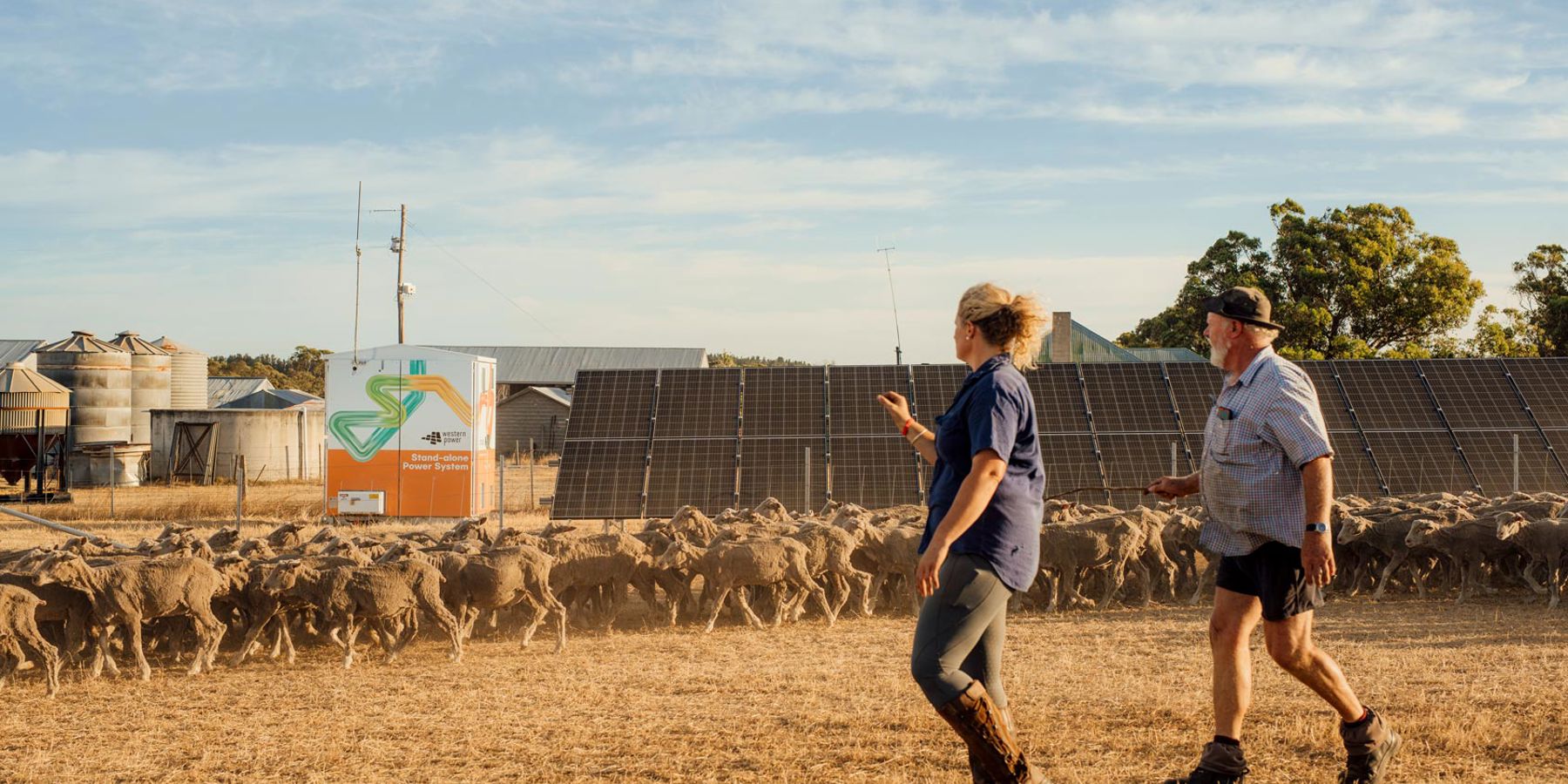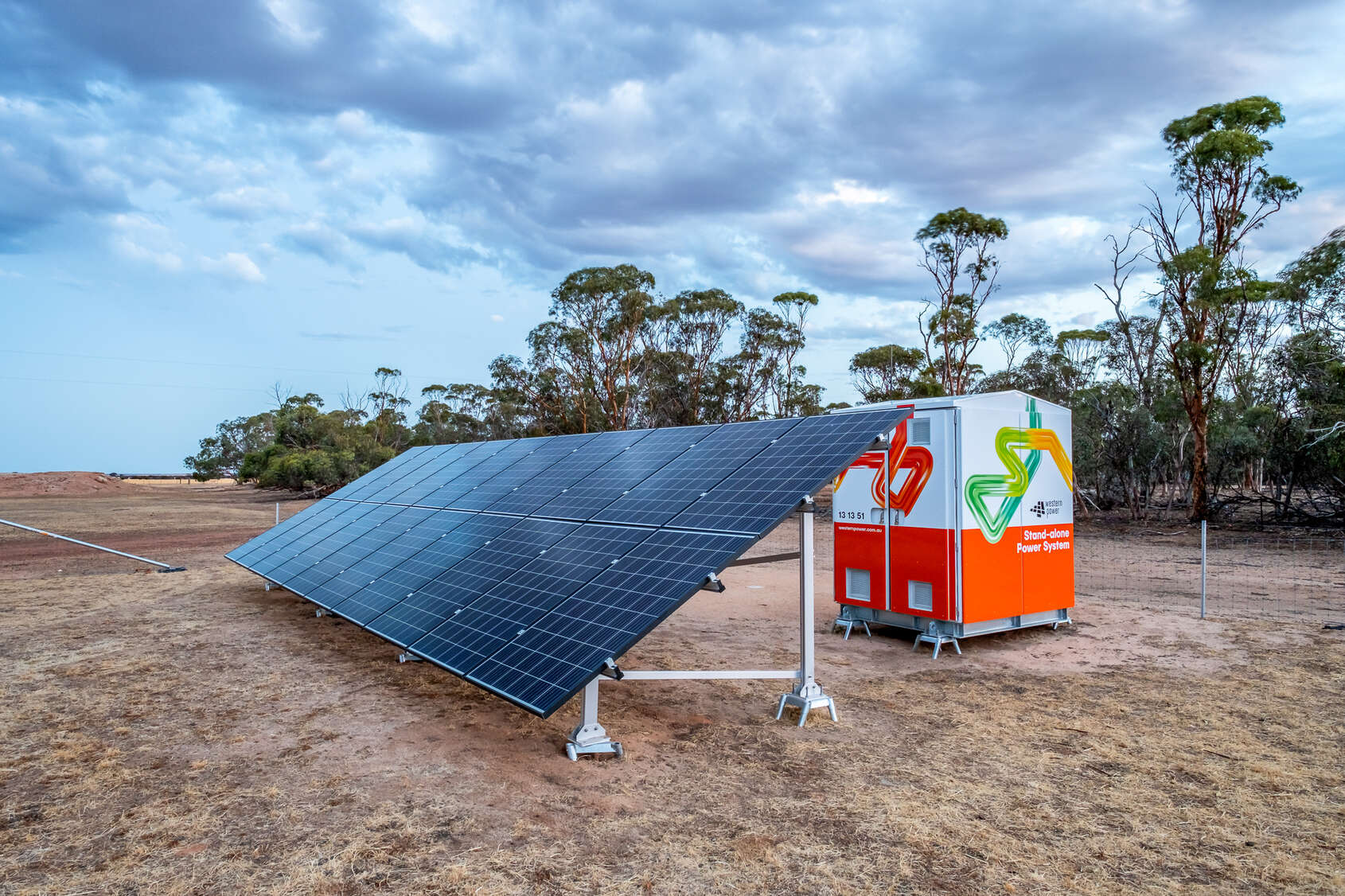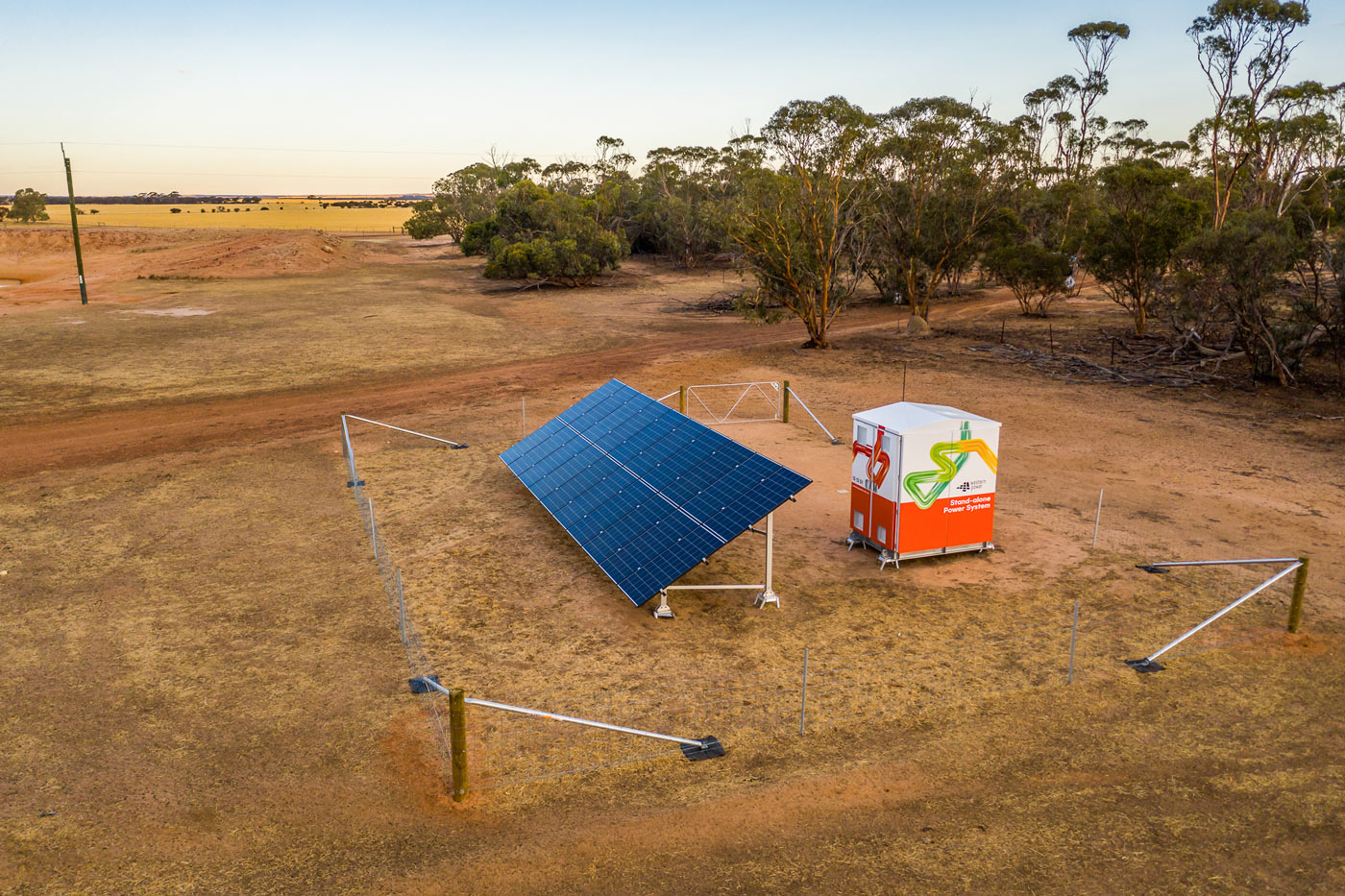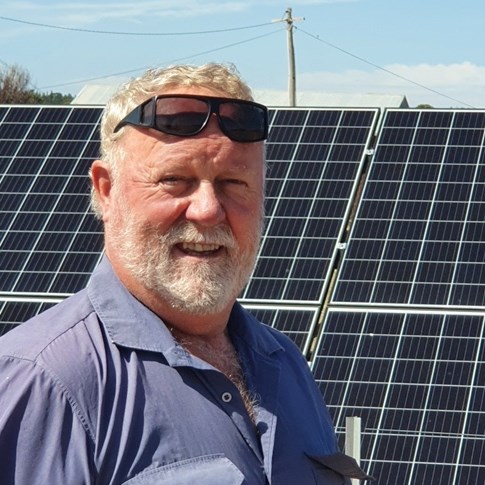FAQs
As a localised renewable technology solution, SPS provide self-sufficient power to rural properties, businesses and locations where they are installed. This means we can remove the powerlines providing power to these properties once the SPS is commissioned. This reduces bushfire risk as long powerlines exposed to dust, debris, lightning and other environmental factors, pose a fire risk. As poles are de-energised, and then removed (decommissioned), this risk is eliminated.
SPS are a safer, greener and more reliable power supply alternative for rural WA customers.
We design our SPS systems to cater for the standard supply of 63A, with up to 40A of inrush, as defined in the WASIR. Given the range of customer load & consumption requirements, we’ve designed our fleet to be modular and flexible, and can be scaled up or down.
SPS sizing is based on:
- a detailed review of the customer’s historical consumption data, and where available advanced metering (AMI) data
- a site inspection
- the customer’s approved future plans.
Our initial customer engagement, site visit and review of historical consumption data is critical to provide us with the information we need to get the SPS sizing right. The nature, timing and duration of the load being used would impact the PV and battery capacity required for the system.
On days with significantly higher night time energy consumption than usual, or days with cloud cover, backup generation may be utilised. The design of the system is in accordance with the relevant Australian Standards (4509 & ASNSZ 3000) and a lifecycle assessment is used to identify the optimum mix of solar, battery storage and backup generation. We currently aim for greater than 90-95% of all energy to be generated from renewable sources.
We cover the cost of SPS installation, maintenance and replacement. This includes site visits and investigations, system installation and ongoing maintenance.
After comprehensive feasibility evaluation, we will reach out to customers eligible for the SPS program.
Some of the things we consider when determining eligibility include:
- The location of the customer and whether they’re on an isolated line or part of a small groups of customers located on the edge of the grid
- Network reliability in the area
- When the network assets in the area are due for replacement
- The cost of replacing network assets compared with providing SPS to these properties
- The topography of the area, and
- Existing network maintenance requirements.
The success of our SPS program has resulted in a strong interest from regional families and businesses who are keen to have SPS installed on their property. Currently, only customers who live on properties we’ve identified after a comprehensive feasibility evaluation are eligible. We proactively contact customers who meet the eligibility criteria.




